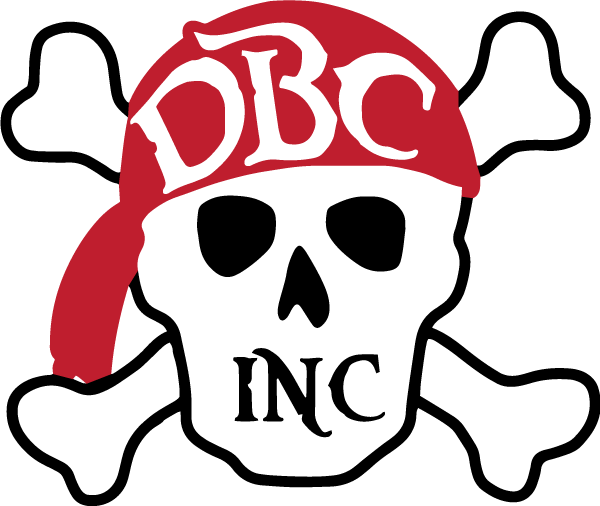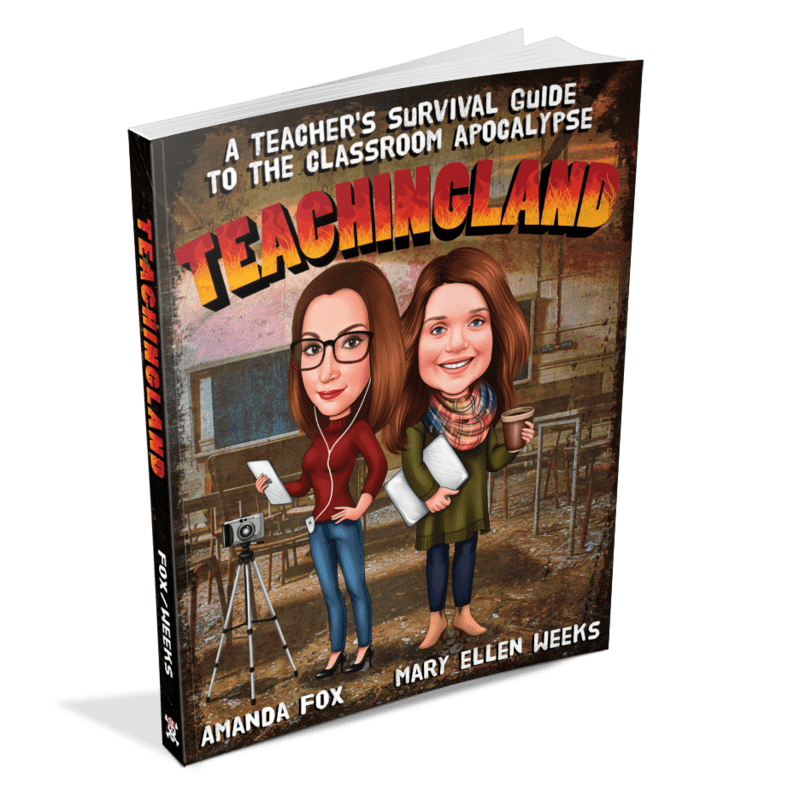You don't want to miss this guest post by co-authors of Teachingland, Amanda Fox and Mary Ellen Weeks. In Teachingland, Amanda and Mary Ellen outline the rules for survival, including the mindset, remedy, and planning guide you need to weather the classroom apocalypse. You will certainly want to check out the Free Preview at the end of this post,, but for now...
Enjoy this guest post by these two incredible educators!


Guest Post by Amanda & Mary Ellen
Teaching in a STEAM or Maker class is exciting. Preparing design challenges for students not only has them empathizing with their heart, critically thinking with their brains, and making with their hands, but it also fosters collaboration, creativity, and communication skills--essential human intelligences they will need in life. In Teachingland we discuss the topic of authentic assessment, offer rubrics to assess hands on projects, and provide 10 survival themed maker challenges spanning multiple grade levels to get you started with maker projects for the school year!
Check out an example of one here!
Unfortunately, as rewarding as these activities are there are barriers to providing design thinking and maker challenges that often come down to the number of consumables and the price tag they carry. While some elementary school teachers integrate STEM activities and design challenges into their classroom of 20-25 kids the reality is that many schools have a related arts or STEM teacher that see the entire school before the year is up. That can be as many as 1000 students or more!
While some schools and districts have larger budgets to fund materials and licenses, other districts leave their teachers adding on classroom consumables to their weekly grocery bills which adds up over time, and with every project. I can totally hear The Beatles song “Can’t Buy Me Love”, and though that may be true, our love of our students and the profession drives us to dig into our own pockets even if it means depriving ourselves so that we can provide opportunities that in turn will foster a love of learning that will extend beyond our classroom (that Beatles references was a total nod to Sean Gaillard author of The Pepper Effect). We don’t hesitate to spend it on our students because they are “our kids”. No doubt about that. From the moment they enter our classroom until infinity and beyond!
This isn’t a new problem or one that is isolated to STEM or Maker teachers. Ever since my first year of teaching it was kind of the norm. I recently read an article about librarians and english teachers buying their own classroom books, so their students would not go without. But with a little planning, list making, and fostering a classroom culture with a village mindset, there are ways to provide all the wonderful maker and STEM opportunities to our students without breaking our own banks!
Below we address two groups of stakeholders you can approach and various ways to call on them to contribute in your mission to stock your classroom complete with links to resources to help you in this mission.
Stakeholders
1. Parents
Parents are the first advocates for their students, so it's natural to start there! While some schools may have policies about not asking for donations, sometimes it takes stakeholders outside of the classroom to make EduMagic happen! We suggest creating a comprehensive supply list with project names or learning objectives so they can see your vision for why you need the materials you are asking for. Sending this home with students via paper, or online signup is a great way to alleviate some of the financial burden of consumables and it allows parents to contribute. We have sample letters included with a comprehensive supply list with items listed for each Teachingland design challenge. Parents can sponsor an entire design challenge or send in one or two items they choose. Feel free to customize a version that works for your classroom, or send it out in a digital newsletter!
2. Businesses
Large companies like Sam’s Club, Costco, Home Depot and Kroger often donate supplies to schools and individual classrooms if you take the time to go in and ask about it. I have personally gotten scrap wood from Home Depot and office supplies and paper from Sam’s Club just by going in and explaining what my students were working on. It doesn’t hurt to try! Also consider going to small local business leaders! They have a vested interest in local talent and will often sponsor activities, donate money, and even send in an expert that may be able to connect what students are designing or making with future careers.
Fundraising and Second life Hardware: Consumables and Beyond
Making isn’t always tangible. Digital making is becoming more common and skills like coding and 3D design are becoming more important pieces of curriculum that need to be woven into the daily lives of our students. Our students are creating digital games, XR experiences, websites, and so on. Below are some great options to address the lack of technology you may need in order to pull of that fantastic CoSpaces + Merge Add on project, or devices you may need to add computational thinking through coding.
Donor’s choose is one of the best ways to fundraise for consumables and beyond. This is a great way to acquire larger ticketed items like technology, but also anything Amazon has to offer! In Louisville, Kentucky the local business Louisville Family Fun promotes certain classroom projects to help see them funded by doing a $5 friday. Starting a community support system or even posting the projects started by teachers to the school social media can help rally all stakeholders around a common goal: to eliminate all barriers to quality education. By donating they are coming together to build a better future for the local community.
2. TechtoSchool or STS Education
Both of these companies provide affordable second life hardware that comes with warranties and go through rigorous inspections at a fraction of the cost of new technology. I (Amanda) have personally bought refurbished iPads and MacAirs for my STEAMPunks program in Kentucky, and also iMacs for my Film lab in Savannah, Georgia. While you won’t be getting the latest model, it is an economical solution to trying getting more technology in the hands of students. In the past I have been able to purchase 10 ipads for $1,000! While they won’t be running ARKit, they do run a lot of creation apps like iMovie, StopMotion, some AR creation apps, which are all great for creating and also documenting the making process. Launching fundraising activities like movie nights, selling program t-shirts, or making things and selling them are great ways to generate funds for your program budget to make these purchases. If you have any questions about ideas reach out! We can help you brainstorm ways to get the things you need! That is creative problem solving at its best!
Thank you for reading! We hope you gained some useful tips to stock your maker closet on a budget! Be sure to pick up a copy of Teachingland and Zom-Be A Design Thinker! Use the hashtags #teachingland and #zombeDT to join in on the conversation on twitter!
Amanda Fox and Mary Ellen Weeks
Thank you, Amanda & Mary Ellen
Wow! What an incredible post, friends! Thank you!
Don't forget to follow these ladies on Twitter @AmandaFoxSTEM and @mrsmeweeks and via their website teachinglandthebook.com. Also, click the link below to read the first few chapters of their book for FREE!. Just scroll down to "Preview," and check it out!
Teachingland
Do you have what it takes to survive the classroom apocalypse?
More info →






